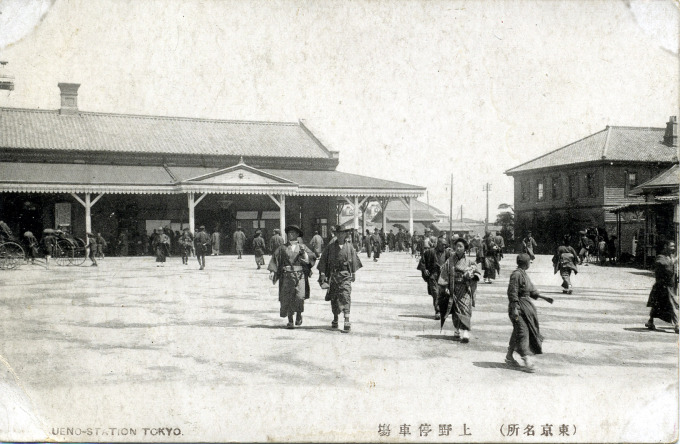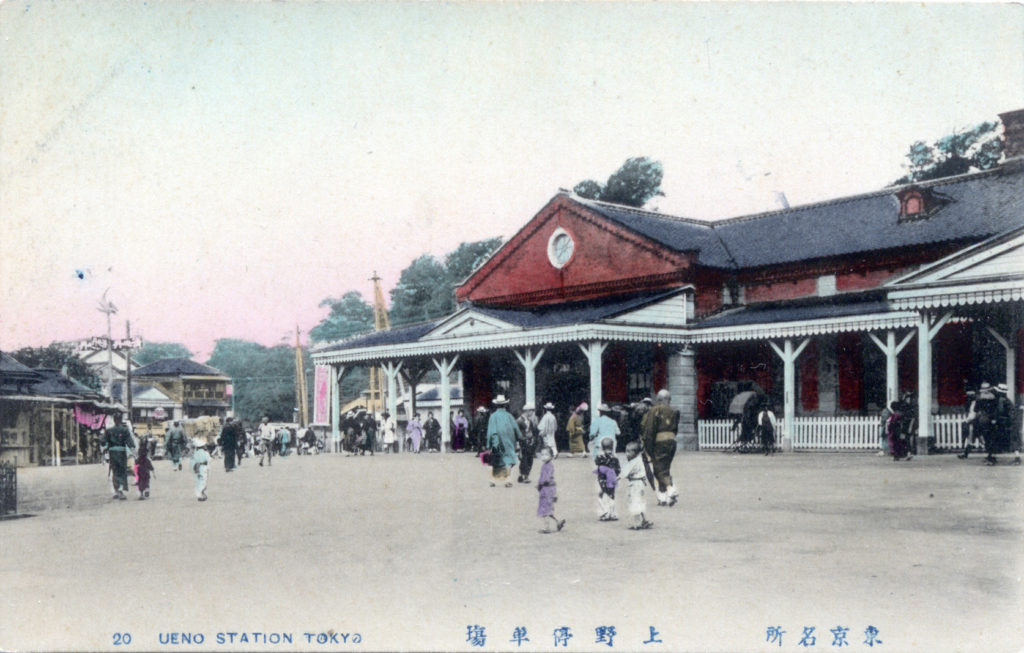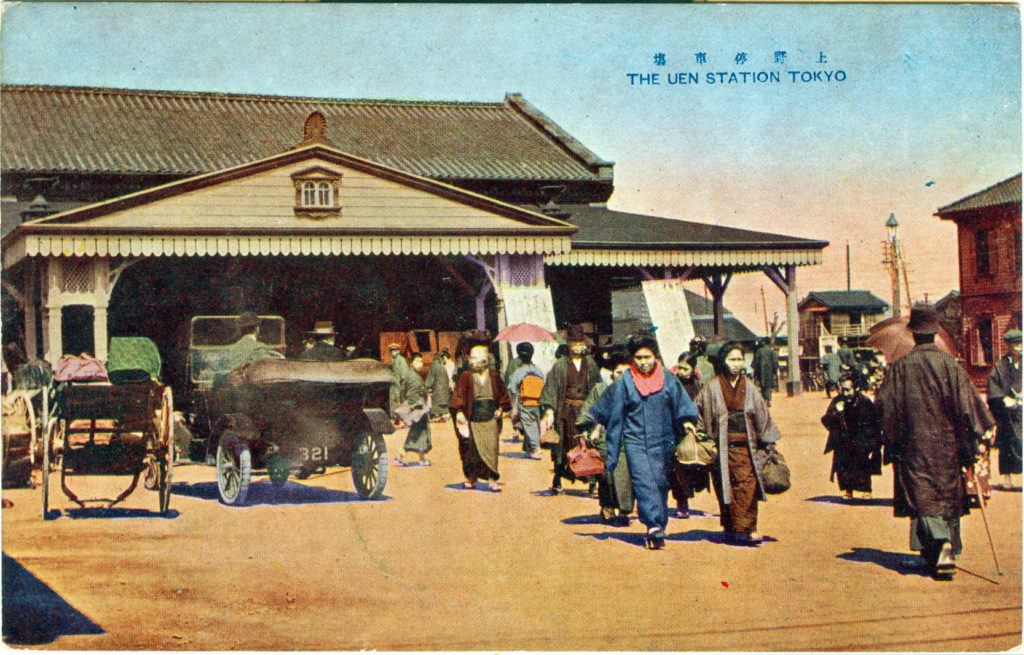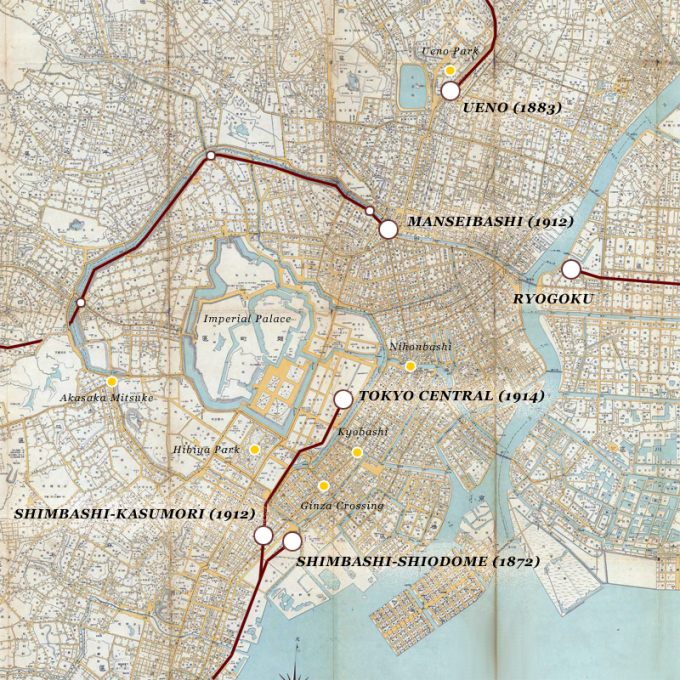See also:
Ueno Station, 1930-1950
“Ueno Station has absolutely no elegance of any kind. It has a roof to keep off the weather and that roof is supported by plain wooden posts; there are one or two necessary pens at the end for luggage and tickets and that is all; and for my part I cannot see what more in the name of common sense is wanted in a railway station.
“You don’t get marble pillars adorned with acanthus capitals in a Japanese railway station – things which nobody wants there – but in the plain wooden shed you get your ticket for almost nothing at all, a thing that everybody wants but does not get in the gorgeous booking halls of Europe. Well, we got out of our train while making these sage reflections, or some of them, and made our way to the luggage place in the midst of the huge crowd of little people – not a soul one was relieved to see, in foreign clothes – all chattering and clattering along to the exit.
“There is something to be noticed about a Japanese station besides its commendable lack of ornament and that is the clattering made by the passengers as they walk, especially if the station be one with a roof. Of course, it does not sound at all a proper thing to say about Japan but that sound always reminds me of what one may hear in Lancashire when the ‘hands’ are pouring into some large station in their clogs. It is not quite the same sound. The wooden props of the geta, as their wearers shuffle gently along, sound a little differently from the solid clogs on the feet of these other youths and damsels whose movements are not gentle.”
– Present Day Japan, by Augusta M. Campbell Davidson, 1908
“The luggage that comes out of a Japanese train is too funny for anything; never a trunk or box among it unless there be foreigners among the passengers, only piles of those oblong wicker baskets fitting one inside the other, which are here called kori [portmanteau, or wicker trunk] … As the train had been rather full it was quite a long time before our multitudinous kori were disinterred from beneath the mountain of other people’s, but at last getting them and ourselves into an inordinate number of rickshaws we set off through the darkness for our hotel.”
– Present Day Japan, by Augusta M. Campbell Davidson, 1908
The original Ueno Station opened in June, 1883, establishing the first rail link to Japan’s northern provinces aboard trains operated by the then-privately-owned Japan Railway Company. The station was of a very modest, simple design compared to the more elaborate terminals at Shimbashi and Manseibashi; a stark reminder of the socio-economic divide that existed between go-go Meiji Era Tokyo and the country’s poorer, rural northern hinterlands. Service between Ueno and Kumagaya was initiated in 1883; local and express through-service to Aomori, at the northern tip of the main island of Honshu, was completed in 1891.






Pingback: Tokyo Station, 1914-1940. | Old Tokyo
Pingback: Manseibashi Station (1912-1936). | Old Tokyo
Pingback: Ueno Station, c. 1930-1950. | Old Tokyo